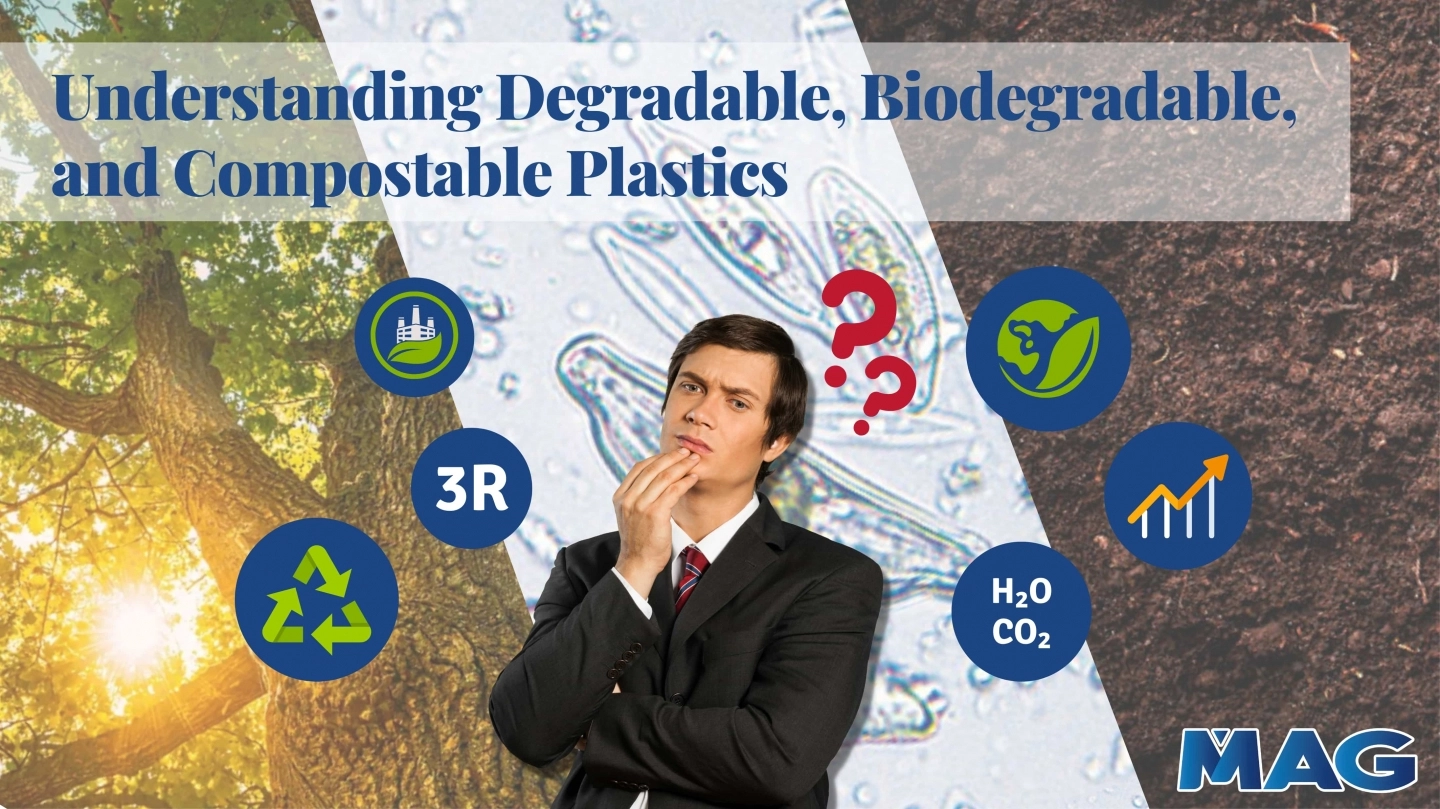
Given that advanced technology brings convenience to life, the destructive impairment of the environment comes along imperceptibly. Therefore, considering the biological behavior at the beginning of product design is crucial. Suitable and methodical management ought to be carried out from the material selection to the after-use disposal.
To replace fossil fuels, choosing more eco-friendly materials for each field of industry is worthy of attention in the contemporary era. For instance, degradable, biodegradable and compostable plastics are similar but different terms.
Degradable Plastics
The degradable plastic is made from petrochemical or biological materials. Degradability, including biological, photochemical, and chemical degradation, means that the product fulfills the operational requirement without changing the performance by the expiration date, and it can degrade into harmless plastics after usage.
However, if the degradable waste is not handled scientifically and systematically, it will still cause soil contamination and groundwater pollution. This kind of plastic should be recycled properly, like traditional plastics.
*Degradability and biodegradability are not synonyms, but biodegradability is a subset of degradability.
Biodegradable Plastics
Biodegradable plastic is 100% degradable and can be fully digested by microbes as food or energy at particular temperatures and humidity. To be 100% degradable, the plastic needs to degrade in industrial compost and cannot degrade automatically in nature.
MAG's PLA film, made from the extract of natural plants (monomer material), is 100% biodegradable and compostable. After burial and compost, this eco-friendly material can decompose completely into H₂O and CO₂. Besides, PLA film contains non-toxic and non-irritating substances and will not cause any damage. It is efficient for carbon emission reduction.
Compostable Plastics
Compostable plastic, the biodegradable plastic in industrial compost, can be decomposed into CO₂, H₂O, mineral salt and other biological materials. Eventually, the amount of heavy metal, toxicity test and remnant splinter should comply with the relevant standards such as ASTM 6400, ASTM 6868, and EN 13432.
Since the pandemic outbreak occurred, the percentage of public pollution has been rising annually. While developing businesses, implementing packaging sustainability to facilitate the sustainable plastic cycle simultaneously is a necessary solution. Following the 3R (Reduce, Reuse, Recycle) principle is beneficial for both the environment and the ecosystem.
References:
Ublog- 可降解、可生物降解與可堆肥有甚麼區別?
每日頭條- 可降解塑料到底是什麼?你知道哪種最適合我們嗎?

